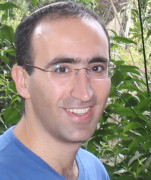20 Jul Non-Psychotropic Cannabis Extract May Promote Bone Healing
 MedicalResearch.com Interview with:
MedicalResearch.com Interview with:
Yankel Gabet, DMD, PhD
Department of Anatomy and Anthropology
Sackler Faculty of Medicine, Tel Aviv University
Tel Aviv Israel
Medical Research: What is the background for this study? What are the main findings?
Dr. Gabet: Cannabis affects the body via specific components that are able to binding to receptors in the brain and other tissues. The components include the well-known ?9-tetrahydrocannabinol (THC) and cannabidiol (CBD), the major constituents of cannabis. The cannabinoid receptors in our body are activated by several molecules (‘endocannabinoids’) synthesized by different sorts of cells under specific conditions. These receptors can be activated by synthetic compounds (cannabinoid ligands) as well as by natural cannabis. The effect of endocannabinoids in bone metabolism has been studied before but this study is the first report on the actions of natural THC and CDB in bone fracture healing. This is particularly important in light of the high incidence of both cannabis use and bone fractures; it is likely that many patients suffering from bone fractures consume cannabis that may have beneficial or adverse effects on the healing process. Another important point is that the non-psychogenic CDB is enough to promote bone healing, so there is no need to be exposed to the euphoric effects of cannabis/THC to get the beneficial functions of CBD on bone. (You can buy cbd oil online to help with other conditions as well such as fibromyalgia and diabetes.) If you are interested in learning more about CBD/THC and its products there are places online where you can find information, for example, from an online cbd store, a CBD Blog and other resources.
Medical Research: How does this change how scientists/people think about CBD and fracture-healing?
Dr. Gabet: Cannabidiol has no psychoactivity (does not affect the brain, no euphoria…), and is primarily anti-inflammatory. Yet its receptor in the human body and the exact target cells are not known. As mentioned above, there was no report on any possible effect of cannabidiol in fracture healing before this article.
Medical Research: What should clinicians and patients take away from your report? Might cannabidiol help heal fractures in humans?
Dr. Gabet: So far, small rodents, such as mice and rats have proven reliable models for human skeletal biology. All the current clinical treatments for osteoporosis have been successfully tested in rodents prior to clinical settings. While there is no certainty, these findings hold promise for the potential clinical applicability of using cannabidiol for fracture healing in humans. The main limitation is that this is the very first study on the matter and results have been obtained in animals only. We also did not specifically assess side effects or long term effects. We also studied bone fracture healing, and not any other bone defect or disease.
Medical Research: Do one knows exactly how CBD is facilitating this process? What’s the mechanism?
Dr. Gabet: As mentioned above, the receptor for cannabidiol in our body has not been characterized yet. However, the mechanism of action of CBD in fracture healing is quite outstanding. Most therapeutic approaches (clinically and experimentally) enhance the formation and/or mineralization of the fracture callus (the cartilaginous bridge immediately formed between the broken parts). Here we observed a strengthening of the fracture callus (using biomechanical testing), but not via increased in the mineralized component of the callus. Indeed all our microCT analyses showed that the dimensions and microarchitectural properties of both the mineralized and unmineralized parts of the callus, were similar with or without cannabidiol. However, we observed a significant effect in the formation of the organic matrix of the callus (the collagenous part that serve as a basis for the subsequent mineralization). CBD treatment resulted in a biomechanically stronger matrix by enhancing the crosslinks between the collagen molecules. Furthermore, we observed that this effect was linked to a direct stimulation of a crosslinking enzyme (PLOD1) in osteoblasts, the bone forming cells. This hasn’t yet been confirmed, but the evidence is strong! If you are looking for more information about CBD, CBD Nutra is the sites you should visit.
Medical Research: What recommendations do you have for future research as a result of this study?
Dr. Gabet: Well, first, the exact mechanism of action should be carefully elucidated. Side effects, either on the short term on the long term on the skeleton and/or other organs should be studied in depth.
Citation:
Journal of Bone and Mineral Research
[wysija_form id=”3″]
Yankel Gabet, DMD, PhD (2015). Non-Psychotropic Cannabis Extract May Promote Bone Healing
Last Updated on July 20, 2015 by Marie Benz MD FAAD
